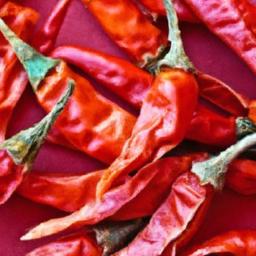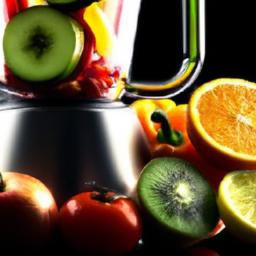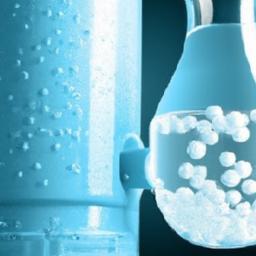Decoding the Spice Duel: Red Pepper vs. Cayenne Pepper
When you glance at your spice cabinet, you might assume red pepper and cayenne pepper are one and the same-both vibrant red, both fiery. Yet, these two chili sensations differ significantly in heat intensity, flavor nuances, and culinary uses. Wondering how to pick the right one for your dish or which will ignite your palate more intensely? Let’s dive deeper to uncover the distinctions and culinary secrets behind red pepper flakes and cayenne pepper powder.
The Distinctive Characteristics of Red Pepper Flakes and Cayenne Pepper
Red pepper flakes-also called crushed red pepper-are commonly a blend of various dried chili peppers, coarsely crushed to reveal flecks with seeds intact. Their texture contributes a crunchy bite and sporadic heat bursts. This spice is synonymous with classic pizza joints, adding both visual appeal and a smoky-sweet zing.
On the other hand, cayenne pepper is a finely milled powder incorporating pure chili essence from the cayenne pepper fruit itself. Originating from the city of Cayenne in French Guiana, it is celebrated for delivering an even and potent heat that can subtly infuse soups, sauces, and spice mixes with its bright, sharp flavor.
| Spice | Taste Profile | Scoville Heat Units | Typical Culinary Uses |
|---|---|---|---|
| Red Pepper Flakes | Smoky, slightly sweet, crunchy bursts | 15,000 – 45,000 | Pizza toppings, pasta, salads, marinades |
| Cayenne Pepper Powder | Bright, piercing, evenly distributed heat | 30,000 – 50,000 | Soups, stews, dry rubs, spice blends |
Understanding Heat: Comparing the Spicy Kick
Heat perception varies significantly between the two. Imagine eating red pepper flakes as an exhilarating amusement park ride – jolting and unpredictable spikes of heat with a crunchy texture. Cayenne, conversely, is like a steady uphill climb of warmth that saturates evenly throughout your dish.
According to recent culinary research, cayenne consistently ranks higher on the Scoville scale-the industry standard for measuring pepper heat-while red pepper flakes offer a broader heat range due to their mixed chili origins. Cayenne’s concentrated capsaicin content makes it an excellent option for those wanting a persistent glow without textural interruptions.
Practical Tips: Mastering Each Pepper in Your Kitchen
- For dishes needing bursts of sharp heat with texture, sprinkle red pepper flakes toward the end of cooking or as a final garnish to preserve crunchiness.
- Add cayenne pepper during cooking stages to allow its fine powder form to integrate seamlessly, delivering consistent heat throughout the meal.
- Experiment by balancing both spices: a pinch of cayenne in chili sauces with a sprinkle of red pepper flakes on top can create complex heat layers.
- Interestingly, cayenne pairs intriguingly with sweet-flavored items like dark chocolate or pumpkin desserts, adding an unexpected and sophisticated warmth.
- Both spices are potent: start small and adjust gradually to avoid overpowering your dish.
FAQs on Red Pepper and Cayenne Pepper
Q: What fundamentally divides red pepper from cayenne pepper?
A: Red pepper flakes are mixed crushed chilies, often with seeds and skin, providing a coarse texture and varied heat. Cayenne is ground from a specific chili variety, resulting in a finer powder with a more uniform and stronger heat.
Q: Is the spice intensity of the two comparable?
A: Not quite. Cayenne is generally spicier, averaging 30,000 to 50,000 Scoville units, whereas red pepper flakes vary widely from 15,000 to 45,000 due to their mixture of chili types.
Q: Can these peppers be combined in a single recipe?
A: Absolutely, but balance the heat carefully. Red pepper flakes add crunchy pops and mild-to-moderate heat, while cayenne delivers a smooth, intense warmth.
Q: How do cooking applications differ between them?
A: Red pepper flakes excel as finishing spices on pizzas, salads, and pastas, adding visual and textural interest. Cayenne works best as an ingredient in sauces, soups, and dry rubs where even heat dispersion is desired.
Q: Are there health differences between the two?
A: Both contain capsaicin, beneficial for boosting metabolism and reducing inflammation. Cayenne’s higher heat means more capsaicin, but red pepper flakes provide dietary fiber and retained nutrients since they’re less processed.
Q: Should I swap one for the other in recipes?
A: You can substitute, but reduce the amount of cayenne used to avoid overpowering heat. Red pepper flakes provide less consistent spice and added texture, making swaps situational.
Q: Why do red pepper flakes sometimes include seeds but cayenne powder does not?
A: The seeds remain in crushed red pepper flakes to preserve texture and some pungency, while cayenne powder is finely ground and sifted, resulting in a seed-free, homogenous powder.
Q: What is the best storage method for these spices?
A: Store both in airtight containers placed away from heat, moisture, and sunlight to maintain flavor potency. Unlike wine, these spices don’t improve with age but slowly lose their aroma and strength.
| Aspect | Red Pepper Flakes | Cayenne Pepper |
|---|---|---|
| Origin | Assorted dried chili peppers | Single cayenne chili |
| Form | Coarse flakes with seeds | Fine powder without seeds |
| Heat (Scoville Units) | 15,000 to 45,000 | 30,000 to 50,000 |
| Texture | Crisp, uneven bites | Smooth, uniform heat |
| Usage | Pizza, pasta, garnish | Soups, spicing blends, rubs |
Final Thoughts: Tailoring Your Heat Experience
Standing in your kitchen with these chili contenders, consider your preferred flavor profile and heat tolerance. If you favor a vibrant, crunchy spice with bursts of smoky sweetness, red pepper flakes are your ally. For reliable, potent heat that blends effortlessly into complex dishes, cayenne is the champion to reach for.
Remember, the choice isn’t just about adding heat-it’s about crafting balance, layering flavors, and expressing personality through your cooking. Whether simmering a spicy stew or brightening a salad, integrating the right chili can transform ordinary meals into memorable experiences.
At How To Cook Gourmet, we encourage you to continue experimenting with these fiery friends. With every sprinkle or dash, you’re not just seasoning food-you’re composing a flavor story uniquely your own.
So, who will take the spotlight in your spice rack today-red pepper flakes or the fiery majesty of cayenne pepper?




